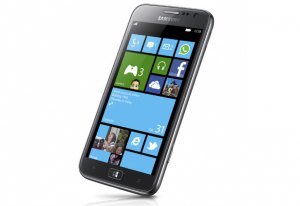It has been a week of firsts for Intel and Microsoft, two behemoths of personal computing that have lost a lot of their swagger (if not their money-making power) with the rise of mobile computing. Qualcomm and Apple along with Google have become the harbingers of the mobile future.
In the past, I have been fairly critical of Intel and have talked about Microsoft’s challenges with its new user experience in an app-centric world. This week, the two companies took their next (baby) steps into the mobile future, though it is still far from certain if they will be successful.
 ZTE, a Chinese telecom equipment provider announced an Intel-powered phone (that uses the Intel Atom Z2460 processor.) Motorola, a division of Google confirmed that its first Intel powered smartphone could hit the market sometime later this month, while Samsung became the first mobile phone maker to release phones powered by the new Windows mobile OS called Windows Phone 8. The Samsung devices (branded ATIV S) beat Nokia to the punch when it comes phones using the latest version of Microsoft’s mobile OS.
ZTE, a Chinese telecom equipment provider announced an Intel-powered phone (that uses the Intel Atom Z2460 processor.) Motorola, a division of Google confirmed that its first Intel powered smartphone could hit the market sometime later this month, while Samsung became the first mobile phone maker to release phones powered by the new Windows mobile OS called Windows Phone 8. The Samsung devices (branded ATIV S) beat Nokia to the punch when it comes phones using the latest version of Microsoft’s mobile OS.
However, the new Motorola phone, expected to be released on September 18 in an event in London, is a more meaningful development for Intel which has struggled to get a toehold in the handset business. To be clear, our sources tell us that only the European version of the device will be powered by Intel’s chips. In the U.S., the same phone will use Qualcomm chips as it is for the Verizon network and Verizon requires chips to support its wireless broadband networking standards.
Others such as Lenovo who use Intel chips are fairly marginal players in the smartphone business that is increasingly dominated by Apple and Samsung. The Google-Motorola-Intel partnership remains one of Intel’s showcase deals for its mobile chip efforts. Earlier LG had talked about an Intel-powered phone, but it ended up going with Qualcomm. Those in the chip business tell us that while Intel’s silicon isn’t nowhere close to Qualcomm’s top-of-the-line products, the Santa Clara, Calif.-based chip giant has come up with chips that have pretty solid power management. Now when Motorola launches those devices later this month, we can see for ourself how good Intel’s Atom chip really is!
